TL;DR
Get your water garden ready for freezing weather with a clear plan: control leaves, clean sludge, store the pump, protect fish with aeration and a de-icer, and overwinter aquatic plants. Use these koi winter care tips if you’re wondering how to winterize a backyard pond in any cold climate.
TL;DR

Ensure healthy overwintering with aerators and plant care that maintain oxygen and reduce decay in your pond ecosystem.
Winterize your backyard koi pond with leaf control, pump storage, plant care, de-icer setup, and koi feeding rules for cold-climate water gardens. Backyard pond winterization is about keeping oxygen moving, protecting equipment, and reducing decay so water stays stable until spring. Most koi and goldfish overwinter safely if the pond is deep enough and a small ice-free opening allows gas exchange. On the first frosty mornings, I walk past water gardens gone still, lily pads like parchment and the skimmer basket full of oak leaves. This is where small choices pay off. A net stretched before peak leaf drop, a clean pump stored indoors, an aerator humming in the shallows. These details keep fish comfortable and the pond ecosystem ready to wake cleanly when light returns.
Why Winterizing a Koi Pond Matters
Healthy winter ponds depend on oxygen flow, minimal organic buildup, and equipment protected from freeze damage. From water gardens to larger koi ponds, the winter-ready formula is simple: limit debris, stabilize water quality, and keep a hole in the ice. This year’s backyard design trend leans practical and eco-friendly—pond owners are pairing native landscaping with smart aeration and low-maintenance routines. Think of it as sustainable outdoor living for your fish and your sanity. With a clear checklist, you’ll protect plants, fish, and pumps while preserving curb appeal and water clarity when spring arrives.
Anecdote
On a blustery November morning in northern Arizona, I watched a small courtyard pond keep a fist-sized opening in the ice all winter with one mid-depth air stone and a compact de-icer. Come March, the lilies woke fast and the koi were already cruising the warm edges.
8 Essential Winterizing Steps for a Backyard Pond
01. Leaf Control and Netting Most ponds benefit from a leaf net installed 2–3 weeks before peak fall drop to prevent up to 80% of debris from sinking. What it is: A simple pond maintenance step that keeps organics out, reduces winter toxin build-up, and saves spring cleanup time. How it works: Leaves and seed pods break down under ice, consuming oxygen and releasing gases that stress fish. Skimming daily during heavy fall winds and stretching a dome or flat net over the water curbs that decay. In a maple-lined Minneapolis yard I visited last fall, a $30 net reduced spring sludge to a thin film instead of inches. Here’s why that matters: less decay means steadier dissolved oxygen and clearer water when the thaw comes. How to try it:
- Install a 3/8-inch mesh pond net before big storms; stake it taut so leaves blow off.
- Skim floating debris with a long-handled net every few days in fall.
- Empty the skimmer basket weekly until freeze, then remove the net after leaf drop.
- Vacuum 70–80% of visible sludge, then stop to avoid destabilizing the biofilter.
- Refill slowly; use a dechlorinator if you’re on treated municipal water.
- Test ammonia and nitrite; both should read 0 ppm before hard freeze.
- Shut down when water temps trend toward 40–45°F, or just before the first deep freeze.
- Label hoses and unions for easy spring reassembly; store filters and UV units dry.
- Use a GFCI outlet and weatherproof cover if any equipment remains plugged in.
- Cut yellowing foliage; leave 1–2 inches above crowns to avoid rot.
- Relocate hardy pots to the deepest zone; store tropicals indoors at 45–60°F.
- Label varieties and zones so spring division and replanting are simpler.
- Use a pond thermometer; base feed decisions on water temperature, not air.
- Plan long-term stocking at generous volumes per fish to keep oxygen margins safe.
- Keep a log of temps and feed amounts to guide next fall’s taper.
- Move diffusers to half-depth in late fall; confirm gentle bubbling, not a boil.
- Select de-icer wattage per manufacturer guidance for your zone and gallons.
- If ice forms solid, pour hot water to reopen a hole—do not hammer the ice.
- Test pH, ammonia, and nitrite in late fall and after warm spells.
- Avoid big winter water changes; small, tempered top-offs are safer.
- Use cold-weather beneficial bacteria only as labeled and within temperature ranges.
- Use a low seasonal fence or signage near edges when ice forms.
- Provide a separate water source for birds and pollinators.
- Keep a de-icer cord tidy and rated for outdoor use; inspect after storms.
A Quick Reflection on Care and Climate
The beauty of winter pond care is restraint—do just enough to keep oxygen flowing and stress low, then let cold do its quiet work. Each small act, from skimming leaves to moving one air stone, is a promise to spring that the system will wake clean and ready.
See Your Cold-Season Pond Plan Before You Start
Before you plant a single water lily or set a pump, map your pond, shelves, and winter equipment virtually. Platforms like ReimagineHome let you preview backyard design, de-icer placement, aeration lines, and plant groupings so your cold-season plan fits the space and your climate.
Visualization Scenario
Upload a photo of your pond and surrounding beds to ReimagineHome, draw your deep and shallow shelves, place an aerator and de-icer virtually, and test how a leaf net would anchor to nearby stones and edging before you buy gear.
Backyard Pond Winterizing FAQ
Backyard Pond Winterizing FAQ
How deep should a koi pond be to overwinter fish in cold climates?
Many experts recommend at least 24–30 inches in zones 5–6, and deeper where ice is severe, so water below stays liquid and stable.
When should I stop feeding koi and goldfish?
Shift to wheat-germ feed as water cools through 50–45°F, then stop once it holds near 45°F or lower; rely on a pond thermometer, not air temps.
Do I need to turn off my pond pump in winter?
In freezing regions, shutting down waterfalls prevents supercooling and protects equipment; in mild climates, pumps can often run year-round with reduced maintenance.
What size de-icer is best for a backyard koi pond?
Match wattage to pond size and your USDA zone per manufacturer guidance; small ponds often use 200–600W units, larger or colder setups may need 1000–1500W.
Should I add algaecide in winter?
Most algaecides are less effective below about 50°F and can stress fish; focus on debris removal, aeration, and stable water quality instead.
Can hardy water lilies stay outside all winter?
Yes, if crowns rest below the ice line, typically 18–24 inches deep; move pots to the deepest shelf and trim foliage to just above the crown.
The Quiet Work of Winter
When the surface seals and the garden goes mute, a well-prepared pond becomes a study in calm. Fish hover over the deepest shelf, lilies sleep, and the aerator’s soft whisper keeps a small breath of water open to the sky. This is the quiet bargain of winterizing: a bit of work now for months of stability, and a spring that arrives without panic skims and emergency fixes. In 2025, the most resilient backyard ponds are not the most complicated—they’re the ones tuned to place, climate, and care. If you want help imagining the layout before you lift a rock or a lily pot, open ReimagineHome and see your cold-season pond plan come to life.
.svg)

.svg)


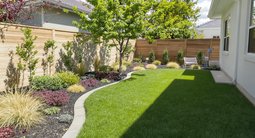
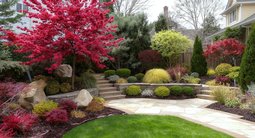



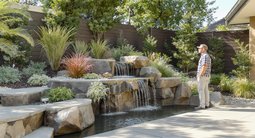

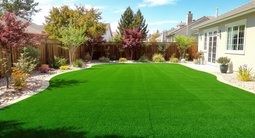

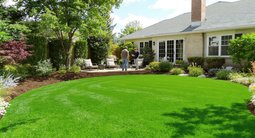


.png)